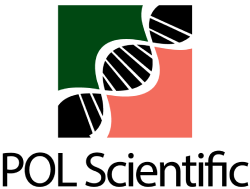The development and application of cleavage under targets and tagmentation (CUT&Tag) technology

The regulation of chromatin structure and gene transcription in eukaryotic cells is an involved process mediated by histone modifications, chromatin-binding proteins, and transcription factors. Studying the distribution of histone modifications and transcription factors at the whole-genome level is crucial for understanding the mechanisms of gene transcription. Cleavage under targets and tagmentation (CUT&Tag) is a novel chromatin analysis method that has rapidly gained popularity in the field of epigenetics since its introduction. It has been widely used for the detection of chromatin modifications and transcription factors in different species. Furthermore, CUT&Tag has also been adapted to simultaneously detect multiple epigenetic modifications. Its integration with single-cell transcriptome, and spatial transcriptome analysis allows for a comprehensive examination of cell fate and functions. In this review, we aimed to provide an overview of the recent developments and applications of CUT&Tag and its derivatives, highlighting their significance in advancing our understanding of epigenetic regulation.
- Quina AS, Buschbeck M, Di Croce L. Chromatin structure and epigenetics. Biochem Pharmacol. 2006;72(11):1563-1569. doi: 10.1038/nrm.2017.94
- Margueron R, Reinberg D. Chromatin structure and the inheritance of epigenetic information. Nat Rev Genet. 2010;11(4):285-296. doi: 10.1038/nrg2752
- Rando OJ, Chang HY. Genome-wide views of chromatin structure. Annu Rev Biochem. 2009;78:245-271. doi: 10.1146/annurev.biochem.78.071107.134639
- Venkatesh S, Workman JL. Histone exchange, chromatin structure and the regulation of transcription. Nat Rev Mol Cell Biol. 2015;16(3):178-189. doi: 10.1038/nrm3941
- Nurk S, Koren S, Rhie A, et al. The complete sequence of a human genome. Science. 2022;376(6588):44-53. doi: 10.1126/science.abj6987
- Van Steensel B, Henikoff S. Identification of in vivo DNA targets of chromatin proteins using tethered dam methyltransferase. Nat Biotechnol. 2000;18(4):424-428. doi: 10.1038/74487
- Schmid M, Durussel T, Laemmli UK. ChIC and ChEC: Genomic mapping of chromatin proteins. Mol Cell. 2004;16(1):147-157. doi: 10.1016/j.molcel.2004.09.007
- Skene PJ, Henikoff S. An efficient targeted nuclease strategy for high-resolution mapping of DNA binding sites. elife. 2017;6:e21856. doi: 10.7554/eLife.21856
- Hainer SJ, Fazzio TG. High‐resolution chromatin profiling using CUT&RUN. Curr Protoc Mol Biol. 2019;126(1):e85. doi: 10.1002/cpmb.85
- Kaya-Okur HS, Wu SJ, Codomo CA, et al. CUT&Tag for efficient epigenomic profiling of small samples and single cells. Nat Commun. 2019;10(1):1930. doi: 10.1038/s41467-019-09982-5
- Kaya-Okur HS, Janssens DH, Henikoff JG, Ahmad K, HenikoffS. Efficient low-cost chromatin profiling with CUT&Tag. Nat Protoc. 2020;15(10):3264-3283. doi: 10.1038/s41596-020-0373-x
- Ge Y, Chen X, Nan N, et al. Key transcription factors influence the epigenetic landscape to regulate retinal cell differentiation. Nucleic Acids Res. 2023;51(5):2151-2176. doi: 10.1093/nar/gkad026
- Zhang L, Huo Q, Ge C, et al. ZNF143-mediated H3K9 trimethylation upregulates CDC6 by activating MDIG in hepatocellular carcinoma. Cancer Res. 2020;80(12): 2599-2611. doi: 10.1158/0008-5472.CAN-19-3226
- Ye B, Shen W, Zhang C, et al. The role of ZNF143 overexpression in rat liver cell proliferation. BMC Genom. 2022;23(1):483. doi: 10.1186/s12864-022-08714-2
- Gassler J, Kobayashi W, Gáspár I, et al. Zygotic genome activation by the totipotency pioneer factor Nr5a2. Science. 2022;378(6626):1305-1315. doi: 10.1126/science.abn7478
- Tan K, Song HW, Wilkinson MF. RHOX10 drives mouse spermatogonial stem cell establishment through a transcription factor signaling cascade. Cell Rep. 2021;36(3):109423. doi: 10.1016/j.celrep.2021.109423
- Rhodes CT, Thompson JJ, Mitra A, et al. An epigenome atlas of neural progenitors within the embryonic mouse forebrain. Nat Commun. 2022;13(1):4196. doi: 10.1038/s41467-022-31793-4
- Chen Y, Zander RA, Wu X, et al. BATF regulates progenitor to cytolytic effector CD8+ T cell transition during chronic viral infection. Nat Immunol. 2021;22(8):996-1007. doi: 10.1038/s41590-021-00965-7
- Crump NT, Smith AL, Godfrey L, et al. MLL-AF4 cooperates with PAF1 and FACT to drive high-density enhancer interactions in leukemia. Nat Commun. 2023;14(1):5208. doi: 10.1038/s41467-023-40981-9
- Lu DY, Ellegast JM, Ross KN, et al. The ETS transcription factor ETV6 constrains the transcriptional activity of EWS-FLI to promote Ewing sarcoma. Nat Cell Biol. 2023;25(2): 285-297. doi: 10.1038/s41556-022-01059-8
- Long Y, Chong T, Lyu X, et al. FOXD1-dependent RalA-ANXA2-Src complex promotes CTC formation in breast cancer. J Exp Clin Cancer Res. 2022;41(1):301. doi: 10.1186/s13046-022-02504-0
- Huang Y, Wang X, Hu R, Pan G, Lin X. SOX2 regulates paclitaxel resistance of A549 nonsmall cell lung cancer cells via promoting transcription of ClC3. Oncol Rep. 2022;48(4):181. doi: 10.3892/or.2022.8396
- Gopalan S, Wang Y, Harper NW, Garber M, Fazzio TG. Simultaneous profiling of multiple chromatin proteins in the same cells. Mol Cell. 2021;81(22):4736-4746.e5. doi: 10.1016/j.molcel.2021.09.019
- Gopalan S, Fazzio TG. Multi-CUT&Tag to simultaneously profile multiple chromatin factors. STAR Protoc. 2022;3(1):101100. doi: 10.1016/j.xpro.2021.101100
- Skene PJ, Henikoff JG, Henikoff S. Targeted in situ genome-wide profiling with high efficiency for low cell numbers. Nat Protoc. 2018;13(5):1006-1019. doi: 10.1038/nprot.2018.015
- Grosselin K, Durand A, Marsolier J, et al. High-throughput single-cell ChIP-seq identifies heterogeneity of chromatin states in breast cancer. Nat Genet. 2019;51(6):1060-1066. doi: 10.1038/s41588-019-0424-9
- Patty BJ, Hainer SJ. Transcription factor chromatin profiling genome-wide using uliCUT&RUN in single cells and individual blastocysts. Nat Protoc. 2021;16(5):2633-2666. doi: 10.1038/s41596-021-00516-2
- Ku WL, Nakamura K, Gao W, et al. Single-cell chromatin immunocleavage sequencing (scChIC-seq) to profile histone modification. Nat Methods. 2019;16(4):323-325. doi: 10.1038/s41592-019-0361-7
- Bartosovic M, Kabbe M, Castelo-Branco G. Single-cell CUT&Tag profiles histone modifications and transcription factors in complex tissues. Nat Biotechnol. 2021;39(7):825-835. doi: 10.1038/s41587-021-00869-9
- Bartosovic M, Castelo-Branco G. Multimodal chromatin profiling using nanobody-based single-cell CUT&Tag. Nat Biotechnol. 2023;41(6):794-805. doi: 10.1038/s41587-022-01535-4
- Bárcenas-Walls JR, Ansaloni F, Hervé B, et al. Nano- CUT&Tag for multimodal chromatin profiling at single-cell resolution. Nat Protoc. 2024;19(3):791-830. doi: 10.1038/s41596-023-00932-6
- Deng Y, Bartosovic M, Kukanja P, et al. Spatial-CUT&Tag: Spatially resolved chromatin modification profiling at the cellular level. Science. 2022;375(6581):681-686. doi: 10.1126/science.abg7216
- Zhang D, Deng Y, Kukanja P, et al. Spatial epigenome-transcriptome co-profiling of mammalian tissues. Nature. 2023;616(7955):113-122. doi: 10.1038/s41586-023-05795-1
- Grandi FC, Modi H, Kampman L, Corces MR. Chromatin accessibility profiling by ATAC-seq. Nat Protoc. 2022;17(6):1518-1552. doi: 10.1038/s41596-022-00692-9
- Segal E, Fondufe-Mittendorf Y, Chen L, et al. A genomic code for nucleosome positioning. Nature. 2006;442(7104):772-778. doi: 10.1038/nature04979

